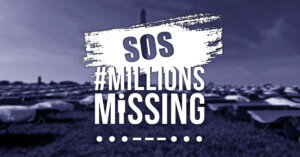Annual Economic Impact of Long COVID in the United States Estimated to Range from $140 Billion to $600 Billion
Analysis by Art Mirin, California Chapter Leader, #MEAction
We recently published a preliminary analysis of the annual economic impact of Long COVID in the United States in Fatigue: Biomedicine, Health and Behavior. We find annual medical costs to range from $43 billion to $172 billion, and annual lost income to range from $101 billion to $430 billion, for a total annual economic impact ranging from $140 billion to $600 billion. Costs of disability services, social services, and lost income on the part of caretakers are excluded from this analysis. We discuss herein some of the fundamental assumptions used in deriving this estimate and also compare our approach with the recent report from the Brookings Institution.
What is Long COVID?
Long COVID refers to the persistence of significant symptoms months following an acute COVID-19 infection. There is no single agreed-upon definition of Long COVID. Different entities have their own criteria, typically involving the number, type and duration of symptoms. Some sources include articles by Johns Hopkins Medicine and Mayo Clinic as well as the CDC.
Incidence of Long COVID
There are a wide range of estimates of Long COVID incidence – from just several percent to nearly 50% of those surviving COVID. Most studies cite an incidence in the 10% to 30% range. This has been acknowledged by the US Government Accountability Office.
Recovery from Long COVID
Very few studies of Long COVID recovery appear in the literature, and of those we could locate, recovery rates range from 15% to 85%.
How Many People have Long COVID?
For purposes of this study, we assumed a Long COVID prevalence ranging from 5% to 20%. The lower limit was based on our expectation that at least 5% of COVID survivors would develop myalgic encephalomyelitis / chronic fatigue syndrome (ME/CFS). The upper limit of 20% was based on applying a 33% recovery rate to a 30% incidence. See (Mirin, 2022) for expanded discussion.
Which Long COVID Cases are being Considered?
Our analysis is based on the reported 85.8 million US COVID survivors as of June 25, 2022. It does not take into account subsequent cases of COVID. We did not consider undocumented cases of COVID, which the CDC estimates could be of significant magnitude. Considering subsequent and unreported COVID cases would result in numbers higher than reported herein.
Use of ME/CFS to Guide our Estimates
The overlap of Long COVID and ME/CFS has been reported numerous times. Experts have estimated that 10% of COVID survivors will experience ME/CFS onset. This is based on ME/CFS onset rates from SARS, EBV and other infections ranging from 5% to 27%. We therefore use ME/CFS to guide our estimates. In particular, we assume at least 5% of COVID survivors will develop ME/CFS, meaning that we can use ME/CFS-based medical expense and employment data for the low-end Long COVID prevalence of 5%. We refer to this as the ME/CFS pedestal.
Loss of Employment
We estimate loss of employment using results of the Davis, et al. survey of nearly 4000 adults with Long COVID. That survey shows 45.2% of individuals having to reduce work hours, and 22.3% having to quit work altogether. Based on Bureau of Labor Statistics information, we assume that those previously working were working full-time. We make the further assumption that those who reduced work went to half-time. This results in an average loss of employment of 45%. We recognize the possibility of over-estimate, since those who chose to join the Davis, et al. cohort might not be representative of the Long COVID population.
For those with ME/CFS, we make use of employment data from the Multi-site Clinical Assessment of ME/CFS (MCAM) study and compute an average employment of 20%. Based on Bureau of Labor Statistics information, we estimate the fraction of employed working-age adults to be 69%. This translates to an employment loss of 49%. For the low-end Long COVID prevalence of 5%, we apply the ME/CFS pedestal and use the 49% employment loss figure.
Loss of Income
Based on Bureau of Labor Statistics information, we estimate the average annual wage in the US to be $58.3 thousand, with fringe benefits costing an additional 49%, making the total wage expense $87 thousand. Assuming the typical person with Long COVID earns a typical wage, we can multiply the average wage expense by the estimated number of unemployed due to Long-COVID to compute the income loss. At the high-end Long COVID prevalence of 20% we use the 45% employment loss figure, and at the low end of 5% we use the MCAM-based 49% employment loss figure.
However, it has been observed that COVID has preferentially affected essential workers, many from the service sector, who make up roughly 30% of the workforce and whose typical wage is roughly two-thirds of average. We allow for the Long COVID population to contain twice as many service workers as would be expected (60% instead of 30%) when computing the range of income loss. Further details are provided in (Mirin, 2022).
This results in a range of lost income of $101 billion to $430 billion.
Medical costs
We first address medical costs for those with ME/CFS, which average to about $10 thousand per year. This then captures a large plurality of the Long COVID cases. However, we have no guidance regarding medical costs of those who do not acquire ME/CFS. Those with organ damage might have higher medical costs, and those with mild cases will likely have lower medical costs. So as not to overestimate, we allow for the non-ME/CFS Long COVID population to have medical costs half that of the ME/CFS population.
Applying the ME/CFS pedestal at the low-end Long COVID prevalence leads to a range of $43 billion to $172 billion annually.
Total costs
Adding together the annual lost income range of $101 billion to $430 billion and the medical cost range of $43 billion to $172 billion gives a total (rounded) annual cost of $140 billion to $600 billion.
Comparison with the Brookings Institution report
The Brookings Institution recently issued a report estimating that Long COVID is keeping up to 4 million people out of work, at an annual cost of up to $230 billion. Brookings did not address medical costs – only lost income. Here are some differences in our approaches:
- Brookings made use of the Household Pulse Survey (HPS) data, whereas we used the number of officially reported COVID cases to estimate the number of working-age adults with Long COVID. Since many COVID cases have not been officially reported, the HPS will give higher numbers. For example, the HPS data has 48% of American adults having had COVID, whereas our figure is closer to 27%. Brookings used the HPS estimate of roughly 16 million working-age adults with Long COVID, whereas we assumed roughly 55*P million, where P is the Long COVID prevalence. Hence our upper range, corresponding to P=0.2, was roughly 11 million.
- Brookings used three different surveys to estimate employment loss. Their high figure was based on the Davis, et al. survey, which we also invoked. However, we interpreted their employment loss data as actually representing lost employment, whereas Brookings appeared to represent that data as unemployment data and measured it relative to the labor force participation rate, which they cited as 75%. This in itself caused a roughly factor-of-two difference in employment loss estimates. Also, we interpreted part-time employment loss as 50%, and Brookings used 10%.
- Brookings computed average lost earnings of roughly $1100 per week, which translates to roughly $57 thousand per year. We used a figure of $58 thousand, but we also figured in fringe benefits of 49%, giving a wage expense of $87 thousand.
- Our intent was to compute a range, not an actual number. We realized that the Davis, et al. unemployment figures were most likely high, because many of those mildly ill would not have joined their cohort. Not knowing for sure what unemployment would look like given a random cohort, we used the Davis, et al. figures to provide an upper limit. Offsetting our potentially high unemployment rate is our use of officially reported COVID cases rather than actual cases.





